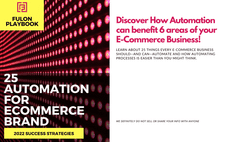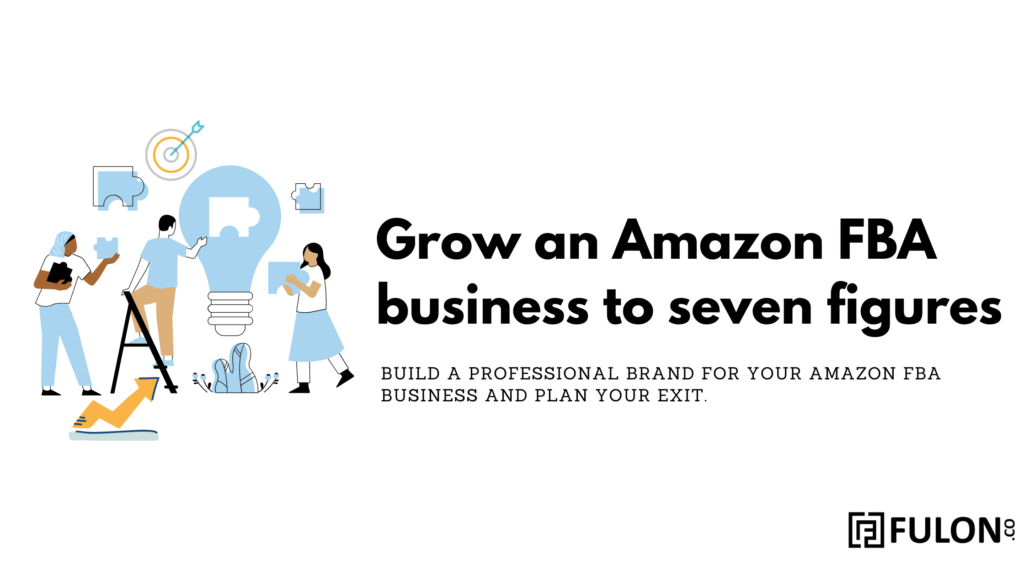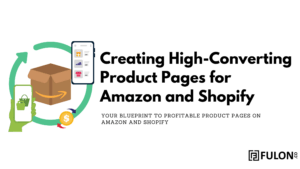Table of Contents
Introduction
Owners of businesses put forth a lot of effort to get things going. However, if you show ROI, it’s time to take a step back and consider how to promote further business expansion. The best course of action is frequently for business owners to delegate work to someone else, such as a professional virtual assistant.
They have more time to scale their business when they delegate time-consuming but important jobs. Here are some suggestions to help you scale your e-commerce business if you don’t already have one.
Two ways to organise your Amazon eCommerce Brand
Let’s start by discussing the type of e-commerce business owner you are or want to be:
The Product Owner
As a eCommerce brand product owner, you have sights set on a seven-figure escape, and perhaps you may have some virtual assistants working for your business. Your main focus is on products, its expansion and bringing more sales.
Exit strategy — You possibly want to exit to an aggregator or possibly through a broker for a two and a half to three and a half multiple because Amazon is their main sales channel. Additionally, they are frequently the team’s smartest member.
The Professional Brand Owner
On the other hand, the Brand owner has a team that is more effective than them at running their firm and assets that go beyond just their Amazon listings. They are dreaming of an eight figure exit. They want to sell for a 5x or more multiple to a qualified buyer and have a defined growth roadmap with predictions to support it.
Which do you desire to be? The decision is yours. Each would be fine. By the time this blog is over, you’ll have a better understanding of what each of those entails and some thoughts about what works best for you.
It’s important to realise that the more buyer options you offer, the more professional your company is. So, based on how organised, professional, and clean your company is, it will provide you access to a wider range of buyer options. If you’re a less organised professional, you may still have options, but those options will be more constrained.
What does it take to run an Amazon FBA business as a professional Brand?
Standard Operating Procedures (SOPs), protocols, and a team are essential for running a professional business. The primary reason why having these in place will boost your ability to scale is because you’ll be able to delegate to your team and put other people in place to stop being a bottleneck and remove yourself from the day-to-day operations.
Similar to how you can delegate this to your team, and the team that will enable you to delegate to possible buyers who may not have the same experience as you do, especially some of these big buyers, if you have the correct organisation and procedures. The team must have the necessary system in order to continue operating your business even if you are not present. Therefore, SOPs, System, and Team are essential to professional ability.
Now, let’s talk about the principles of FBA SOPs..
Operations SOPs

These are merely the pillars upon which your company is built. Things like folder foundations for naming, product organisation, and keeping everything organised in a database for all product information, as well as the day-to-day account management workflow.
Workflow Organization
Get organised as the first step in scaling and selling your company. Since well-structured enterprises are simpler for prospective buyers or investors to understand and hence more appealing to them, organisation is a key first step. Nobody wants to invest money in a mess. But that is the long-term. When organising, there are advantages to think about in the short- and medium-term.
If you had everything categorised and structured, consider how quickly and easily you could add support.
Here are the actions steps for Workflow Organization:
Getting yourself and your team organized
What would you have someone do first if they joined your team tomorrow? Every business owner ought to have a response for this query, even if it’s just a generalisation that will be refined later. You wish to integrate them into the organisational structure of your company. In fact, the top companies are able to predict on day one where a new hire would fit into their organisational structure. You ought to be able to accomplish it as well.
The top businesses can also properly onboard new team members by supplying them with a statement of the company’s mission and values.
Check out on how you surround your e-commerce business with a world-class team here.
Establish a Business Vision
Make a vision statement outlining how you envision the company developing and evolving in the future. Your vision is important to realising your goals for the company and how you envision it in a few years. Be aware that your goals and mission will depend on your vision, or the desired future, in order to achieve it. Think about your special talent so you may concentrate on it more and delegate the rest to your team.
Keep yourself and your team updated
To make sure that you and your team are always travelling in the same direction, be sure to check in and update yourself and your team frequently. Only when all of the sailors are simultaneously paddling will a canoe advance. Ensure that your company works as smoothly as a canoe.
Remove yourself from the operations
Removing oneself from day-to-day operations is a significant stage for your company, particularly if you anticipate ever wanting to sell it. If you are an owner-operator who is heavily involved in running the day-to-day operations, it will be far more difficult to do so. Your company will be more appealing to potential buyers the more organised and self-sufficient it is.
Hence, building a team is your initial move. Building a strong workforce that will work well together and support your company is essential. Once you have that team, you’ll need to train them, and delegating is how you do that.
Create a system so you can demonstrate to your employee how to perform a task. Following that, practise a task with your employee. Finally, assign the task to an employee for independent completion. Continue doing this until your new employee can complete the task on their own.
Build an Organizational Chart
Your internal teams should operate according to your organisational chart. The overall operation’s leader has the top position. It might be either you or your boss. Put the title (CEO, President, Owner, etc.) at the top of the box at the very top and the name underneath.
Make all of the chart’s boxes the same size. A reporting structure is indicated by full lines, which would be drawn from the CEO to various boxes that answer directly to that individual. Dotted lines in a reporting relationship denote a more complex relationship.
When you’re ready, there are numerous ways to actually build your organisational chart. Even if you anticipate changes, create one anyhow. It is preferable to have one that will change, even quickly and with some growth, than to have none at all. People naturally appreciate categorization for its usefulness, and a straightforward chart may give them that.
Amazon System Organization
You should start organising the operation now that you’ve worked to arrange yourself and your team. Everything said above will pay off as you scale and grow, but the effects of the following part will be felt right away. It will assist you in getting organised in the direction of efficiency and systematisation, leaving behind any negative habits from a chaotic past.
Here are the actions steps for Amazon System Organization:
Product Organization
You should schedule a recurring product listing cleanup as your first step in account organisation. Your Amazon account should periodically be cleaned up and all unused SKUs eliminated. Your Amazon Seller account will become simpler to manage as well as have a clean, ordered appearance after this cleansing.
Review your product listing and see what’s still active while you’re at it. It is advised that you schedule this activity for at least once every month. Start off small and create these behaviours into habits. If that still isn’t enough to inspire you, keep in mind that your actions determine how you behave in all situations.
Streamlining of Products
Consolidating related products into the parent-child variant is a major Amazon organisation strategy. Giving your customers a selection of colours inside the single, parent listing is a fantastic idea. The goal is to make purchasing simple enough to increase your volume of sales. Even though it sounds simple, properly setting the variation connections between your SKUs might require time and effort.
Although this is customer-facing, the advantage of having a clearly organised organisation is sufficient. You don’t want confused visitors to your page who couldn’t easily find what they were looking for to leave.
Amazon Brand Registration
Next, register your brand with Amazon to keep everything organised. Too few sellers take use of the organisational advantages that registries offer. These include enhanced brand content, a better overall Amazon experience, and protection of your product listings from competing Amazon sellers.
The ability to use the Enhanced Brand Content (EBC) capability is a significant update that comes with the Brand Registry. With the help of this feature, you may use creativity to improve the appeal of your product listings to customers. To learn more about this feature, check out the Amazon Brand Registry: 6 Benefits Your Brand Needs.
File naming conventions
The name of your files should be organised after you reach a particular level of business. It is advised to give your suppliers, purchase orders, and FBA shipping orders code names. In this way, you, your staff, and in certain situations even a freight forwarder or a supplier, may quickly and effectively sort through the amount of orders and data. Here are some methods for providing an FBA shipment with a helpful reference name:
- Reference Codes for Suppliers
- Purchase Order Folder Naming Structure,
- Folder Structure
- Coding Reference Names
This not only keeps your records organised but also greatly facilitates the onboarding of new employees.
Supply-Chain SOPs

When we work with a new account, these are some of the SOPs that we execute every single time, so obtaining a purchase order procedure, receiving your weekly reorder report, and making sure you’re compliant are all key components of our onboarding process. These are the things that will help you operate your company more efficiently, prevent stock outs, and stay more organised with these things.
Keeping track of your Stock and Inventory
Making assured orders are completed promptly and avoiding running out of stocked items and unmet requests is the fundamental principle of inventory management. Within a few minutes, you should be able to identify when orders need to be placed; even better, you should be able to have this done on a flawlessly balanced cadence when specific metrics are reached.
Here are the important things to remember for keeping track of your stock and inventory:
Inventory System
You need an inventory system if you want to successfully predict demand and place your buy orders accordingly. The structure of that system will differ from person to person. The most significant aspect is that you have a system and you believe in it.
Without these two components, you are constantly vulnerable to human error and could easily overlook, forget, or misinterpret something significant pertaining to your inventory. A good system balances inventory and cost. If you place an excessive number of orders and your stock remains unsold in an Amazon fulfillment centre for several months, your money is also trapped in the form of this extra stock. Additionally, you’ll be paying additional costs for Amazon storage, which might be expensive.
Based on the volume of sales during a specific period of time, the system should take into account order manufacturing times (provided by suppliers), international shipping transit times (provided by FFs), potential delays, and warehouse handling.
Supplier Negotiation and Organization
1. Improve supplier terms through negotiations
Negotiating the best supplier terms is the first step in successfully navigating this area of your organisation. While some people are born with bargaining skills, others are not, this is easier said than done. However, you must master the art of negotiating terms with your suppliers if you want to grow your business to its maximum potential for profit. This is a talent that goes beyond Amazon selling, albeit it might take some practise and you might encounter some rejection. It’s a skill for life.
Building relationships with your suppliers is a smart practise to aid in the process. Once they get to know you as one of their dependable clients, you’ll always be able to ask for more (or better terms).
Keep in mind that the quantity you purchase is the factor that matters most to the suppliers. In order to best suit your payment conditions, request a lower price per item as your volume increases. Simply perform price comparison, which involves looking around for various suppliers, to learn how you’re getting good terms. Request that your current supplier match any lower bids you receive.
Next, make every effort to reduce the cost of FBA labelling. To accomplish this, request that your Chinese suppliers label your product for Amazon before shipping it out. They typically do it without charging you more. To learn more about product sourcing, check out our blog.
2. Proactive Communication with Suppliers
The secret to a successful supply chain management is proactive communication. If your communication is unclear, there is a greater chance of misunderstanding, which increases your risk of additional expenses, delays, or lower-than-expected quality products or services.
Inform the supplier in advance of your expectations for the products, timing, packaging, etc (and again in writing). Verify that you comprehend each and every term. Be prepared for texts and emails to arrive at odd times as well. You will frequently need to respond quickly to prevent delays with production, shipment, and more.
3. Organize the Quality Assurance and Control
You can either be proactive or reactive when managing your quality assurance and control. Being proactive is always preferable. It is preferable to avoid quality issues than to address them after complaints from actual clients. If Amazon notices a quality issue, they might take action quickly to block your product listing.
Setting quality expectations with your producer at the beginning of the negotiation process or when placing an order is a proactive strategy that every seller should use. Include a written statement of these requirements in the order comments section of your supplier agreement. Next, inspect the products’ quality before transporting them from the place of origin. The least you can do is request that they supply thorough photos of the items that are prepared for shipping.
Finance SOPs

Simply having a decent and clean profit and loss statement, which any business should have, is what these SOPs cost of goods and cash flow estimates are all about. These SOPs are based on the potential acquirers and your exit intentions. On the financial side, you’ll need to demonstrate a variety of things, but at the very least, you should have a clear, accurate, and comprehensive profit and loss account. You’ll need correct cost of goods calculations to be able to do that. Having several projections in addition to clear and complete financials is what that means.
Financial Organization
Spend less on logistics when you can. Your second largest cost centre, after the cost of goods, will be logistics-related costs.
Here are a few strategies for optimising your logistics so that you can cut costs and achieve timing success:
Reduce Freight Costs
Get many freight quotes first. The same fundamental principles apply when looking for a freight forwarder and rates as when looking for the best product at the best price. Request a Pack List from your supplier, which must include the size, weight, and quantity of packages containing the items being transported.
You should also prepare information on the sales terms that you agreed upon with the supplier — understand your starting point and ending point.
Next, choose the mode of shipment; your two main choices are air shipping or ocean shipping. You can ask a few forwarders to provide quotes for both methods if you don’t have any expertise or knowledge of the differences between the transit durations and costs of each mode.
Send several inquiries for freight rates with the above information regardless, and then compare costs similarly. Next, observe how quickly FFs provide a price response. The calibre and promptness of their reaction may serve as a key barometer for the future calibre of their service.
Manage your finances
A successful business understands its finances. This holds true everywhere, even Amazon. A skilled salesperson has a firm grasp of these expenses and meticulously records all expenditures and revenues on spreadsheets. You should be able to determine if your company is in the black or the red by punching out a clear and understandable number. You’ll be grateful to yourself for being organised in advance when tax season rolls around.
Even if you are not a certified public accountant, you must learn how to manage your finances so that you can supervise when you hire someone to handle it for you. In either case, it’s necessary that you maintain control over your finances.
Analyze your finances
To maintain control over your income and control your spending so that you do not run out of money, forecast your cash flow. For Amazon sellers, a lack of cash is a regular problem (particularly during busy growth periods), and in the worst circumstances, it might damage your business. To learn more how you forecast your cash flow in Amazon business, check out this blog.
Calculate Cost of Good Sold
Regularly calculate your costs of goods sold. As the nature of the business is in accumulated earnings from sales of all the many product lines, CoGS is one of the most crucial financial KPIs for Amazon sellers.
Using CoGS analysis, you may determine which of your items are making you the most money and have a favourable impact on your bottom line. Then, you may concentrate on selling your “Stars,” your top-performing selling units, and expand your list with additional items like these.
Document Profit and Loss Statement
The profit and loss statement is regarded by many financial professionals as the most crucial document for Small and Medium Sized Businesses. A correctly executed P/L summary allows one to set goals for future performance and make data-driven business decisions, such as cutting expenditures that may be eliminated from operations.
When you are looking for a bank loan, an investment, or even a sale of your business, the appearance of your PL statement may be especially crucial.
Maintain a good profit margin
Take steps to increase your profit margins as much as you can. It benefits you obviously and also increases the appeal of your works to potential readers.
Setting a high price is sometimes out of the question if you want to give a competitive product to the market because Amazon marketplace has millions of merchants competing against one another worldwide. As a result, Amazon/E-commerce companies frequently need to concentrate on reducing their costs. Check out the 7 Easy Ways to Increase Your Amazon Profit Margins in 2022.
Manage Bookkeeping
Keeping your accounting and financial records organised is generally a huge benefit for any business. It’s excellent for tax purposes, conceivable sales, and for you as the business owner.
Consider hiring an accountant, using accounting software, or outsourcing to a dependable third party, depending on the size of your company, your personal accounting expertise, and your willingness (or lack thereof) to spend time putting together reports on your own.
Let’s talk about your exit strategy for selling your Amazon Business for more than it is currently worth now that you are familiar with the three SOPs principles (Operations, Supply-Chain, and Finance).
How to get ready for your Amazon Business Exit
Each market or broker determines the value of your business in a different method. With a few minor adjustments here and there, the most of them adhere to a formula:

Net Profit — The formula is to compute all your finances and profitability for the Net Profit. Your may calculate your profit by being the top on your finances.
Multiple — Depending on a variety of various conditions, it can vary fairly dramatically. Consider all of your company’s components carefully when calculating the multiple to assess how sustainable it is. To assess if the business is expanding or contracting, look at growth patterns and the consistency of your earnings. To determine whether you are adaptable enough to endure changes in your industry, take a look at the variety of your SKUs and the strengths of your supply chain.
To get the value of your business, simply multiply the multiple by your net profit over a rolling 12-month period (to account for any variations or seasonality during the year).
How to prepare your Amazon business for sale

Making your company appealing to buyers is the last step in getting it ready for sale. This entails determining both the business’s strengths and limitations.
Keep in mind that prospective buyers are seeking for methods to expand your company. For buyers with the correct skillset, weaknesses like inadequate inventory management or a lack of marketing expertise might be turned into development opportunities.
In reality, the ideal moment to sell your business has less to do with market circumstances than it does with the business itself, despite the fact that many business owners make the mistake of trying to time the market. When your company has accomplished around 80% of the aims and objectives we discussed previously in this blog, that is when you should consider selling it.
Put your business on the market when things are going well and it is almost at the valuation or annual sales level that you are looking for. Get your business close to the mark in terms of your goals because the sales process doesn’t happen overnight, and then let it sail to the finish line.
Another key thing to keep in mind is to establish your business with the goal of selling it. You can streamline your involvement in the company and its operations when you start it with the goal of selling it. You can also surround the business with a barrier to keep out rivals.
Whether you ultimately decide to sell your business or not, you will gain from streamlining your operations and creating a desirable asset.
Summary
You’ll have created a valuable asset that, if you do decide to sell your company, will probably result in one of the largest capital gains you’ll ever experience. The substantial sum of money you’ll receive from selling your company has the power to completely transform your life, perhaps even enabling you to quit your work and pursue your goals.
Whatever route you take, you now have a guide to follow that will help you get ready for a sale of your company and move a step closer to realizing your business objectives.







